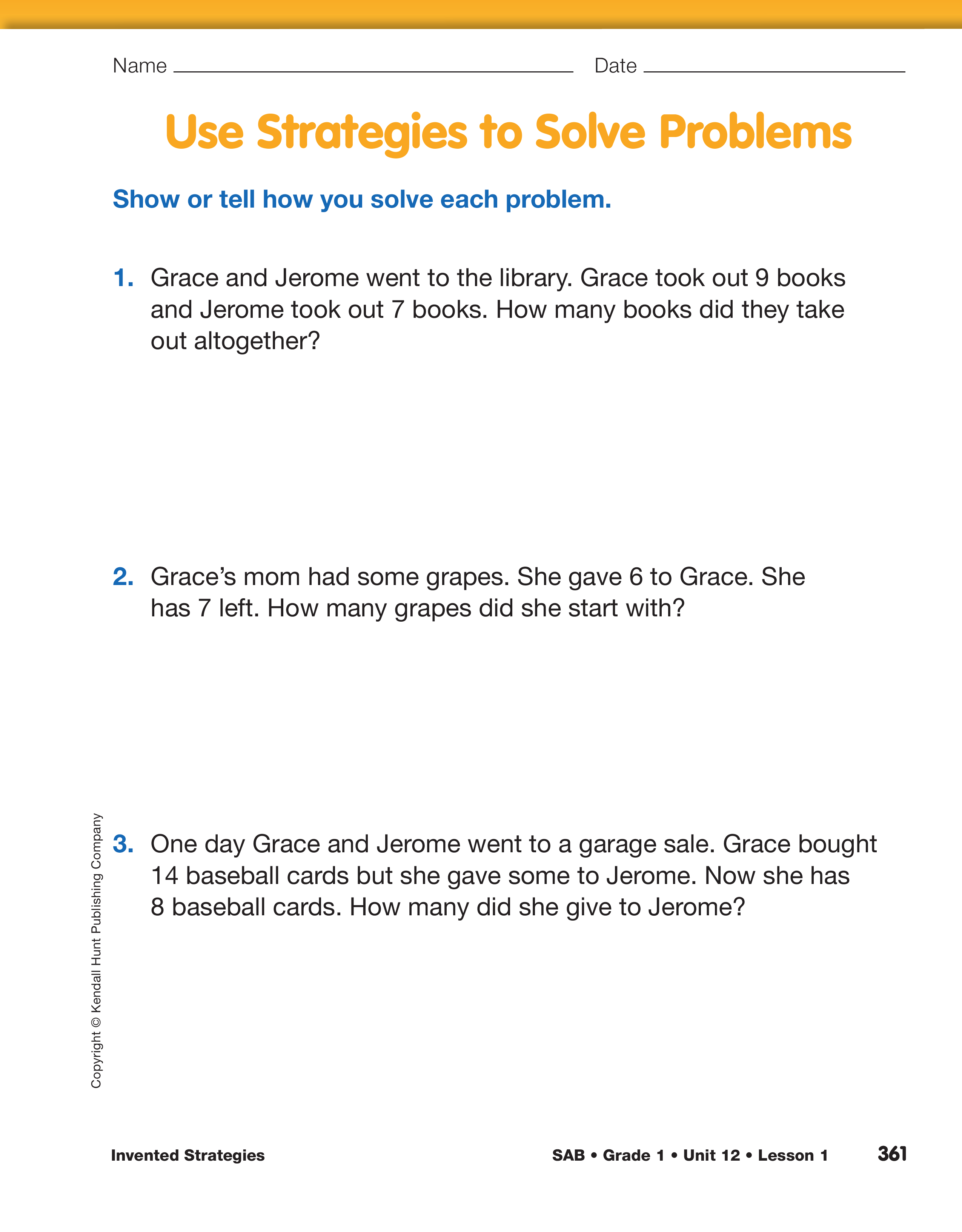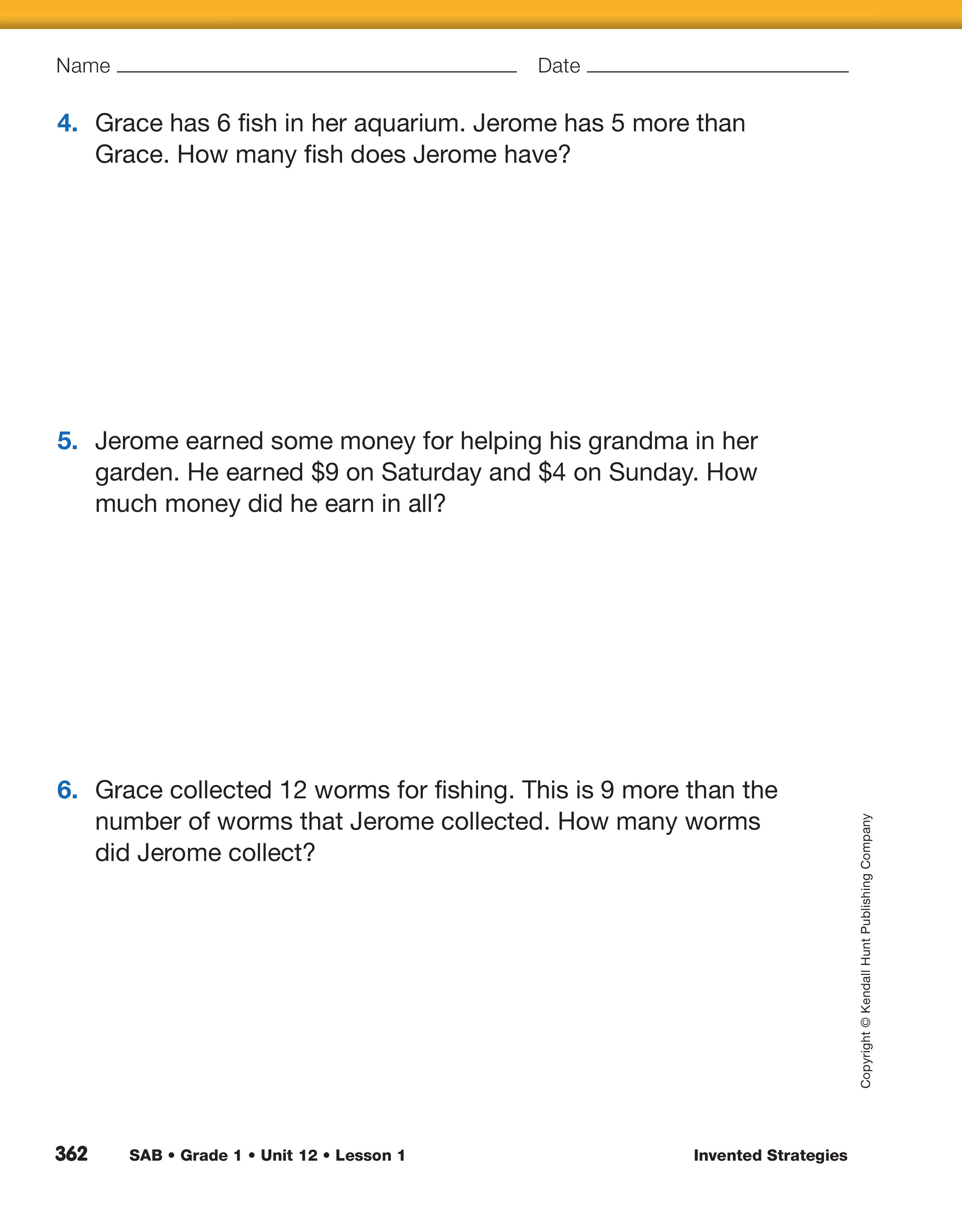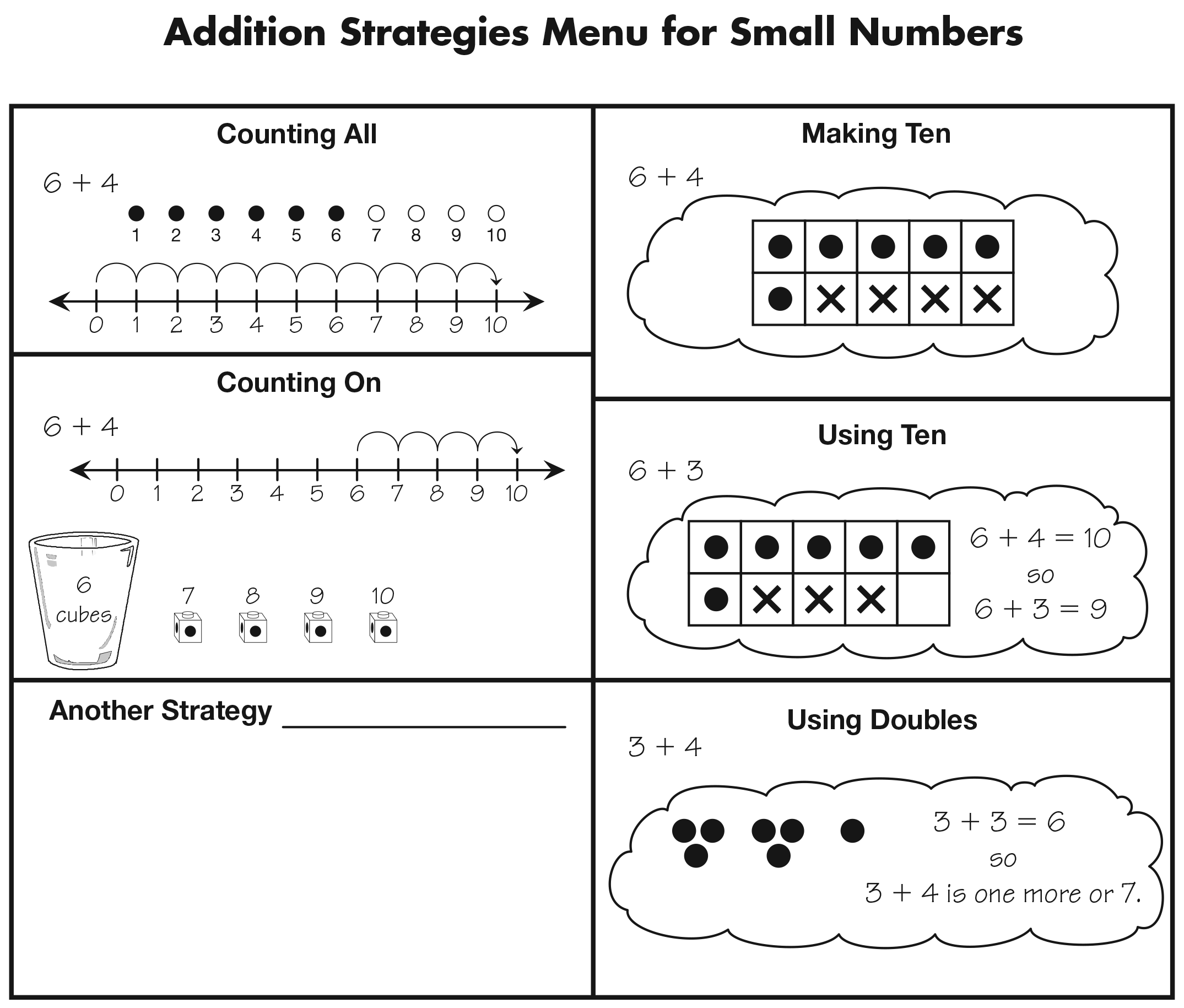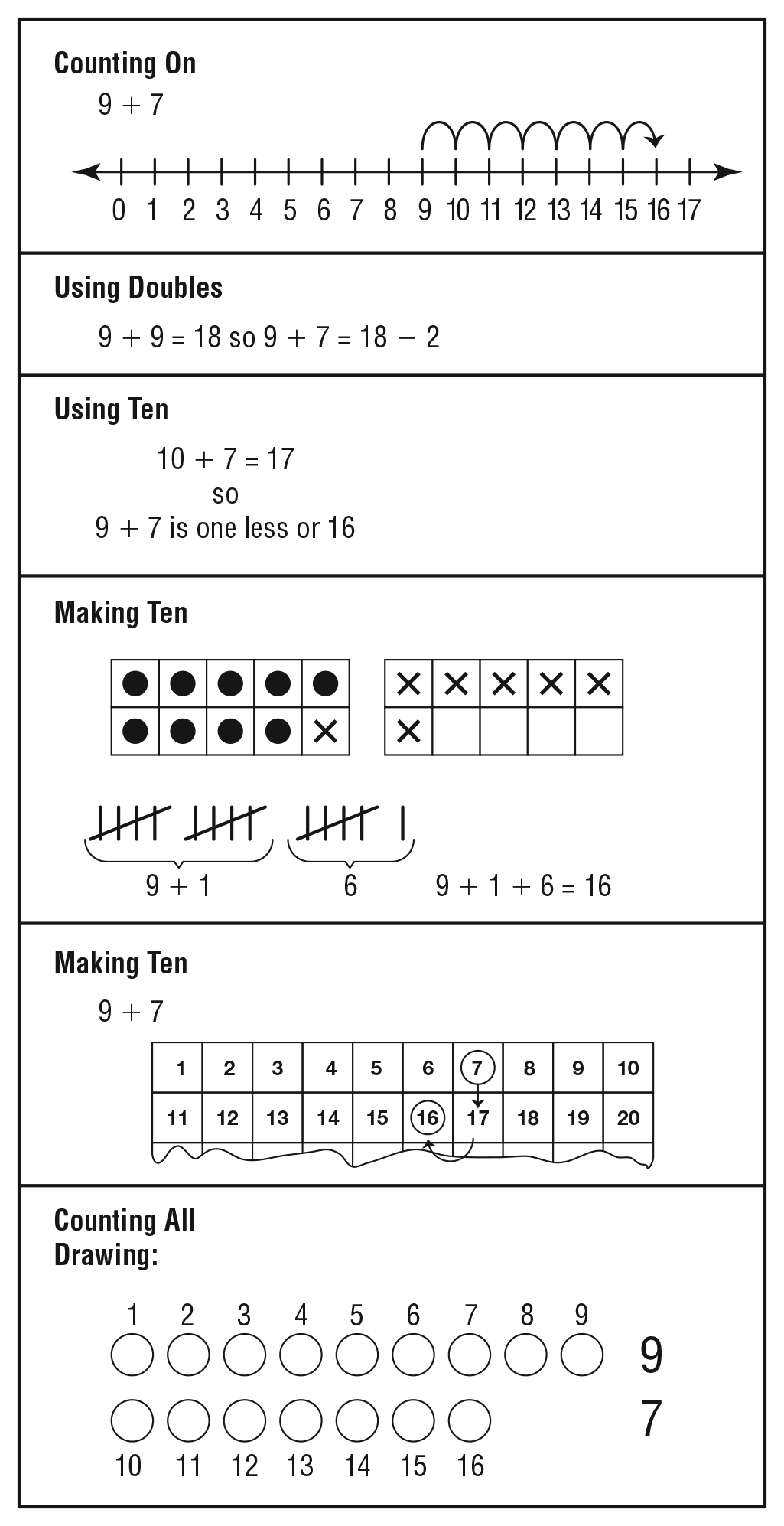Invented Strategies
Est. Class Sessions: 2–3Developing the Lesson
Part 1: Developing Strategies for Problems with Sums to Twenty
Review Addition Strategies. Begin the lesson by reviewing some of the strategy work from Unit 6. Tell students that today's work will be called a "strategy session." They will solve different types of problems with sums greater than 10 and pay special attention to the strategies they use. Use the display of the Addition Strategies Menu for Small Numbers made in Unit 6 and in the Student Activity Book Reference section to review the strategies. See Figure 2.
Say:
Display the sample problem you prepared and ask students to brainstorm as many strategies as possible that they can use to solve the problem. See Materials Preparation. Allow time for students to solve the problem. Have number lines, 100 Charts, ten frames, and connecting cubes available for students to use.
Use Tools and Strategies to Solve Problems. When students are finished working on the sample problem, have them describe their strategies and decide which ones are most efficient.
Ask:
Allow students to describe any of the strategies in their own words. Encourage students to articulate the strategy rather than simply identify the strategy.
Write the title "Invented Strategies" on a chart and list the different strategies students use to solve the problem. See Figure 3 for a sample strategy chart. During the unit, add additional strategies as students come up with new strategies for solving problems with sums larger than 10. Ask a student to choose a strategy and explain it to the class.
Ask:
Encourage students to recognize that for any one problem there may be several different strategies for solving it. With each strategy, there may be several different ways to draw or represent it in a diagram or picture. The Sample Dialog gives an example of a class discussion about strategies.
Practice Invented Strategies. Have students work in pairs to complete the Use Strategies to Solve Problems pages in the Student Activity Book. Display the corresponding display to model how to write or show the strategy. Refer to the display of the Math Practices page from the Student Activity Book Reference section. Explain to students that they should use the following Math Practices as they solve the problems:
- MPE1. Know the problem. I read the problem carefully. I know the questions to answer and what information is important.
- MPE2. Find a strategy. I choose good tools and an efficient strategy for solving the problem.
- MPE3. Check for reasonableness. I look back at my solution to see if my answer makes sense. If it does not, I try again.
- MPE5. Show my work. I show or tell how I arrived at my answer so someone else can understand my thinking.
Remind students to use connecting cubes, ten frames, 100 Charts, and number lines. When they complete the problems, go through each problem and have students demonstrate how they solved the problems. Add new strategies to the Invented Strategies chart.


















